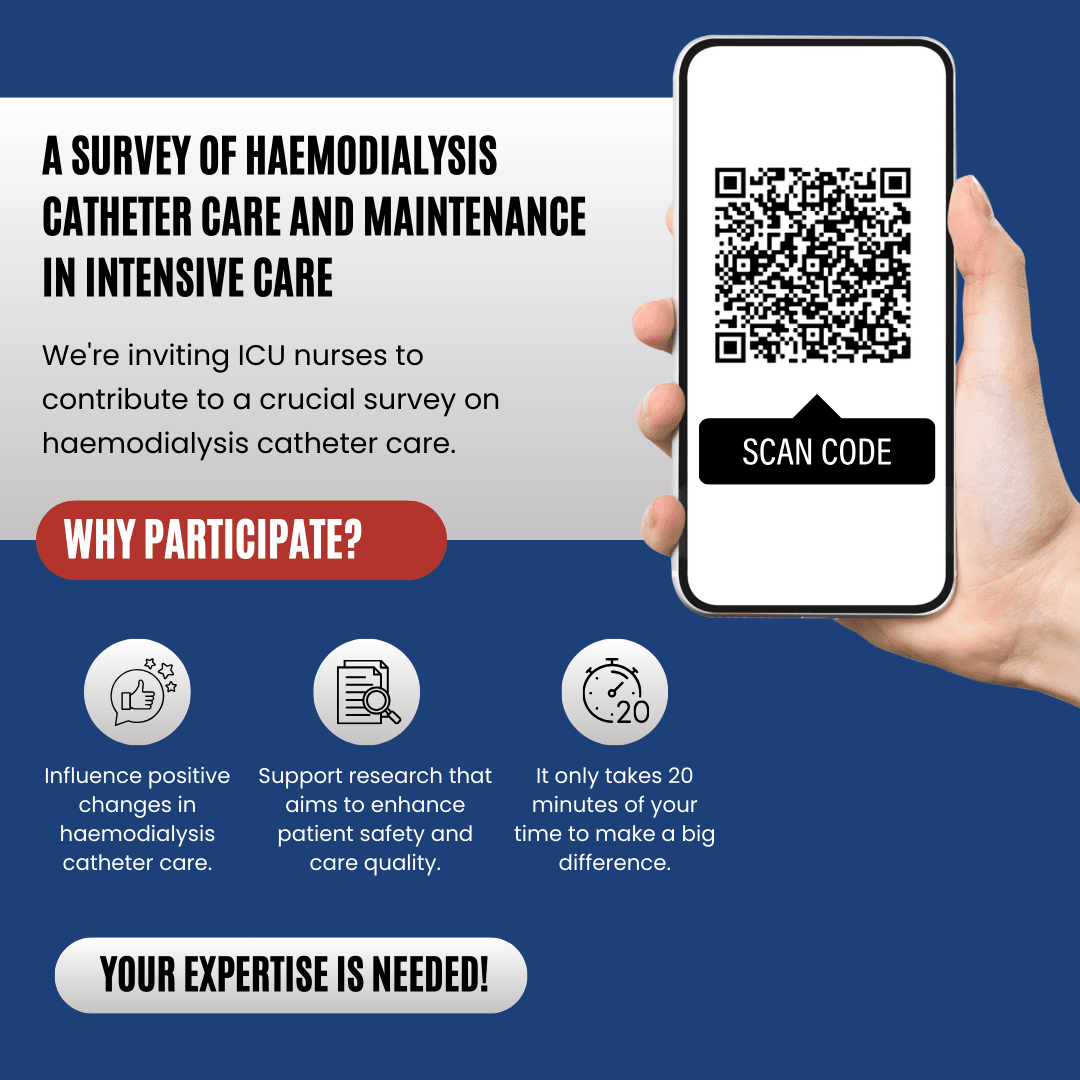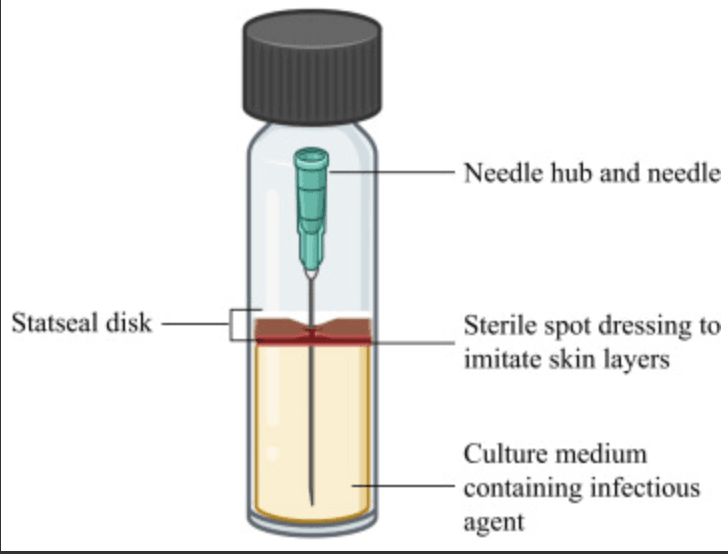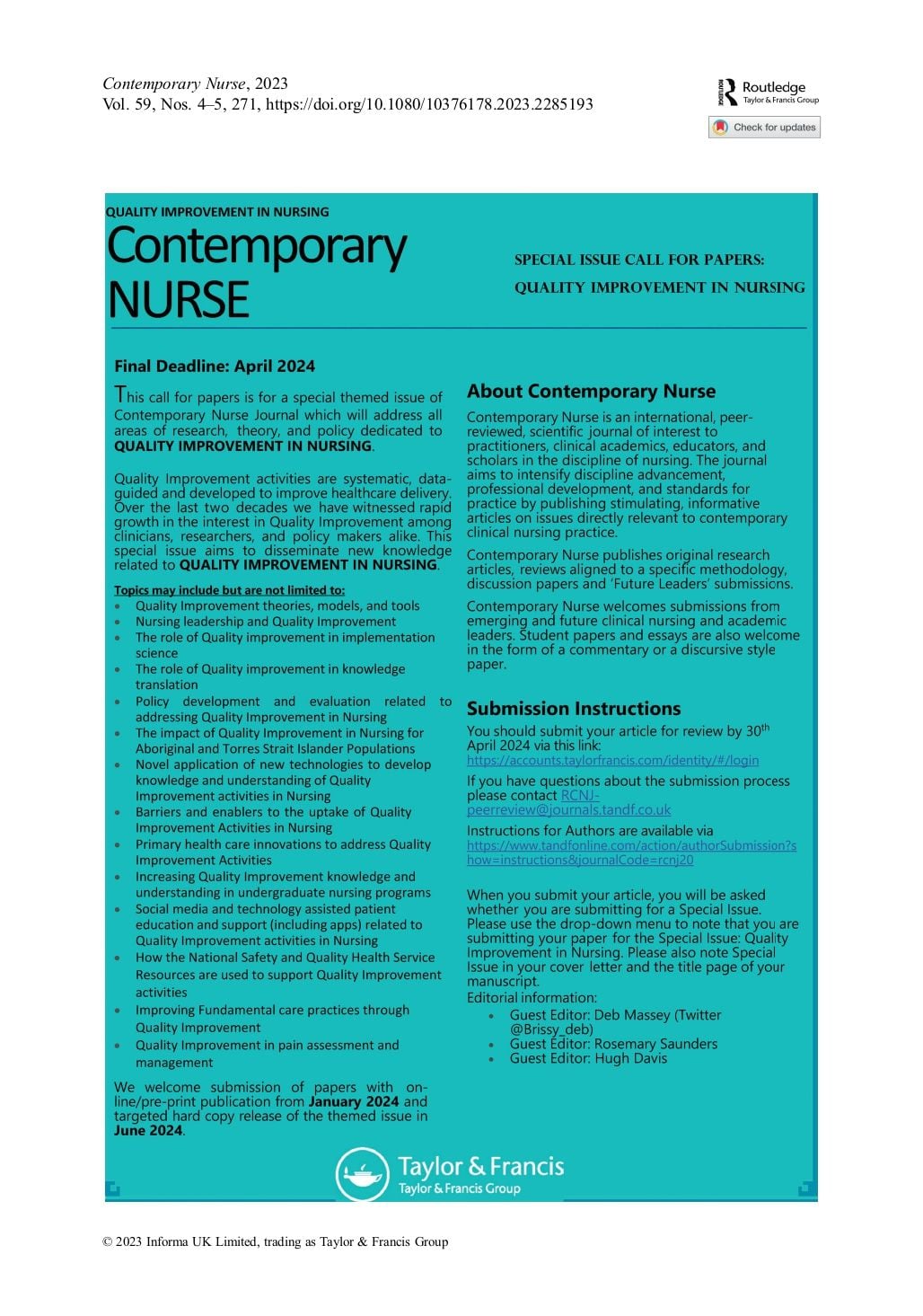Introducing Rebecca and Bertrand Drugeon: A Journey from France to Australia with AVATAR
Posted
on 15 May 2024
)
Bonjour!
My name is Rebecca Drugeon, I’m from France, and I've come to Brisbane for 1 year with my husband, Bertrand, and our 6-month-old baby, Ava.
We are currently living an incredible experience, both professionally and personally.
Bertrand is an emergency physician at Poitiers University Hospital with a strong passion for improving the prevention of complications and management of PIVCs. He’s actually a PhD student in France; it’s his first year in doctoral school...
Advancing Blood Conservation in ICU: A Critical Review
Posted
on 7 May 2024
In intensive care units (ICUs), optimizing blood use is paramount. Frequent blood sampling, while necessary, can lead to waste and complications. Recently, a study scrutinized blood conservation strategies in ICUs. Here's a streamlined summary:
Objective:
Assess and synthesize evidence on ICU blood conservation strategies.
Review Method:
Rigorous Cochrane systematic review methods with meta-analysis and independent reviewers.
Data Sources:
Searched Medline, CINAHL, PUBMED, and EMBAS...
Improving Haemodialysis Catheter Care in ICU: Survey Invitation
Posted
on 24 April 2024
)
Dear Colleague,
You're invited to participate in a brief electronic survey focusing on haemodialysis catheter (Vascath) care in the ICU. This survey is crucial for understanding bedside maintenance practices and shaping future research priorities.
Why Participate:
Haemodialysis catheters are vital for critically ill patients, but complications like occlusion and infection are common. Your input can help prevent harm, reduce costs, and improve patient outcomes. What We Ask: - The surve...
Haemodialysis catheters are vital for critically ill patients, but complications like occlusion and infection are common. Your input can help prevent harm, reduce costs, and improve patient outcomes. What We Ask: - The surve...
Unraveling the Dangers: A Closer Look at Peripheral Intravenous Catheter Infections and Failures
Posted
on 2 April 2024
Introduction:
Peripheral intravenous catheters (PIVCs) play a crucial role in modern healthcare, providing a gateway for administering medications and fluids. However, a recent systematic review and meta-analysis sheds light on the often-overlooked complications associated with PIVCs. In this blog post, we will explore the key findings of their study and delve into the implications for healthcare practitioners and patients alike.
Understanding the Scope of the Issue:
The researchers conduc...
Assessing Patient Experiences with Peripheral Intravenous Catheters: A Critical Evaluation of Quality of Life and Experience Measures
Posted
on 18 March 2024
Introduction
Peripheral Intravenous Catheters (PIVCs) play a crucial role in healthcare, facilitating intravenous treatments for patients. However, common issues such as insertion failure and complications can adversely affect patient outcomes and experiences. This study aimed to evaluate the suitability of generic quality of life and experience measures in assessing the experiences of patients with PIVCs.
Background
PIVCs are widely used in healthcare, with two-thirds of patients in terti...
Vascular Access Terminology
Posted by Kerrie Curtis
on 6 March 2024
Vascular Access Terminology
Common language facilitates communication between professional and organisations, the translation of evidence into clinical practice, data sharing, and research.
The Cancer Nurses Society of Australia (CNSA), eviQ and eviQ Education are leading vascular access management and education in cancer care in Australia utilizing common, contemporary terminology.
Click here to read more: https://www.cnsa.org.au/practiceresources/vascular-access-guidelines
...
| Posted in:AVATAR |
Revolutionizing Vascular Access: The Potassium Ferrate Haemostatic Disc
Posted
on 5 March 2024
)
Introduction:
Vascular access devices (VADs) play a crucial role in managing acute and chronic medical conditions. However, they are often associated with risks such as bleeding and infections. This study evaluated the antimicrobial potential of the potassium ferrate haemostatic disc as an alternative to traditional methods.
Aim:
The aim was to assess the effectiveness of the potassium ferrate disc against Gram-positive (Staphylococcus aureus), Gram-negative (Klebsiella pneumoniae, Pseudom...
Vascular access devices (VADs) play a crucial role in managing acute and chronic medical conditions. However, they are often associated with risks such as bleeding and infections. This study evaluated the antimicrobial potential of the potassium ferrate haemostatic disc as an alternative to traditional methods.
Aim:
The aim was to assess the effectiveness of the potassium ferrate disc against Gram-positive (Staphylococcus aureus), Gram-negative (Klebsiella pneumoniae, Pseudom...
| Posted in:AVATAR |
CNSA Vessel Health and Preservation Event: Unveiling the Future of Vascular Care
Posted
on 28 February 2024
)
Mark your calendars for a groundbreaking event in the world of patient-focused cancer care! On March 19, 2024, join us online for the official launch of the second topic in the CNSA Vascular Access Clinical Practice Guidelines: Vessel Health and Preservation.
Event Highlights:
In 2021, the initial topic of the CNSA Vascular Access Clinical Practice Guidelines addressed patency, occlusion prevention, and management, sparking positive changes across healthcare settings. Now, we're thrille...
| Posted in:AVATARinfection prevention |
IVNNZ Conference March 2024 - Register Today!
Posted
on 6 February 2024
)
AVATAR is thrilled to highlight an upcoming event that our colleagues across the ditch are organizing – the IVNNZ Conference in March 2024! Set against the backdrop of beautiful Wellington, this conference promises to be an exceptional experience.
Featuring a stellar lineup of world-class speakers, including AVATAR legend Dr. Evan Alexandrou, this event is not to be missed. Here's a brief glimpse of what's in store:
Date: March 22-23, 2024
Location: The James Cook Hotel Grand ...
Location: The James Cook Hotel Grand ...
| Posted in:AVATAReducation |
Shape the Future of Nursing: Your Opportunity to Contribute to Contemporary Nurse Journal
Posted
on 5 December 2023
)
Contemporary Nurse is an international, peer-reviewed scientific journal, provides a dynamic space for practitioners, clinical academics, educators, and scholars to share groundbreaking research and insights shaping contemporary nursing practice.
Aim and Scope: Elevating Nursing Standards
The journal's mission – to advance discipline, professional development, and practice standards.
Showcasing Excellence: Call for Papers
Contemporary Nurse proudly showcases original, high-quali...
| Posted in:AVATAR |








